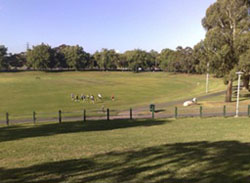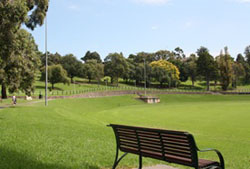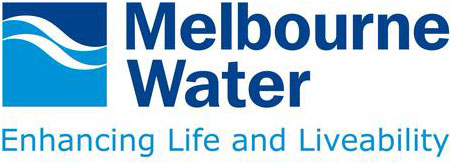resource library
Array
Sports field prior to stormwater harvesting project

Concrete storage tank during construction

Sports field irrigated by harvested stormwater
Como Park Stormwater Harvesting Project
City of Stonnington
Como Park, South Yarra, Victoria | Map:
Published: 23 October 2012
Project Overview
Como Park is a premier recreational site situated on the banks of the Yarra River, in the City of Stonnington. This inner Melbourne sporting ground is used all year round for social and sporting events. In the face of a prolonged drought, Stonnington Council embarked on a stormwater harvesting project to ensure the park's future. The project aimed to meet the irrigation demands of this site using harvested stormwater instead of relying on potable water.
This innovative project intercepts and diverts stormwater that would otherwise discharge untreated into the adjacent Yarra River. The stormwater is intercepted from two nearby stormwater drains that drain a 365 hectare catchment. Stormwater is diverted from these drains into a large underground concrete tank with a 300kL capacity.
The water is treated before irrigation via a gross pollutant trap and a ultra-violet filter. The water yield for irrigation is between 15-20 ML per year which provides Como Park a guaranteed source of fit-for-purpose water and independence from Victoria's potable water supply. This project received a merit award in the category of 'stormwater harvesting and re-use' at the 2009 SIA National Stormwater Excellence Awards.
Drivers and Objectives
When the project was planned, water restrictions were compromising the ability for the oval for sporting and recreation amenity. This resulted in restricted usage of the park to conserve the playing surface.
Como Park was also one of 27 sites in a study initiated by the four inner Melbourne municipalities. This study used a ranking system to identify the potential of these sites for substituting and reducing reliance on potable water. Como Park was ranked second highest within the study providing additional justification to proceed.
The study and the restrictions on water use drove two key objectives for the project:
1. Achieve a significant reduction in potable water use; and
2. Provide a secure supply of water for irrigation to future proof the site.
Organisations
- City of Stonnington (Responsible council and funding partner $80,000)
- STORM Consulting (Design consultant)
- Federal Government Community Infrastructure Funding (RLCIP) (Funding partner - $364,000)
- South East Water (Funding partner $10,000)
Project Outcomes
Environmental outcomes:
- Reduce council's dependency on potable water use by supplying 100% of Como Park's irrigation needs through stormwater harvesting (15-20 ML/year).
- Increase plant health and growth on the site watered with fit for purpose water.
- Increase health and protection of the Yarra River through reduced stormwater flows that will reduce the levels of pollutants (nitrogen, phosphate and suspended solids) entering the River.
Economic outcomes:
Provides an economically viable alternative water source as the cost of Melbourne's potable water supply steadily increases. Based on a 20-year life model of the project, utilising potable water to irrigate the field has been projected to cost as much as $25,611 per year, with the mandated water price increases When the system is fully functioning we completely reduce the need for potable water which means we are saving approximately 7ML of water annually which is a cost saving of approximately $24,577. This figure does not take into account cost for carrying out maintenance which has been more frequent than first thought.
Social outcomes:
- Ensures a drought-proofed recreational facility ensuring that both sporting clubs and the community can continue to use the park irrespective of water restrictions. Communication was sent out to the sporting clubs and several meetings were conducted to inform them of the project.
- Reduced risk of injury due to a softer playing surface.
Lessons Learnt
- Be prepared for unexpected setbacks - excavation uncovered an unrecorded 1.8 metre diameter stormwater pipe and it was therefore necessary to relocate a hydrofilter and sump to accommodate this.
- Clean up construction site and materials as you go to avoid clogging later.
- Continuous monitoring of the project after construction is necessary - in the first 15 months the system performed very well with a full irrigation cycle successfully taking place (16 stations with 4 heads at each station). However, towards the middle of 2011 there were issues with the UV lamp as moisture was finding its way into the lamp and sending out alert SMS messages to the system operator in Parks and Gardens informing them that the system was shut down. This moisture affected UV lamp was replaced and extra exhaust fans added to avoid humidity around the lamp.
- In recent months (September 2012) there have been issues with stormwater not making it into the storage tanks due to problems with the pump. The City is currently looking into upgrading to a better submersible pump. This is yet to be completed.
Project Cost
- $450K (construction costs)
Timeframe
- Construction commenced July 2009
- Project completed October 2009
- Irrigation switched on November 2009
Contact
Sarah Buckley - City of Stonnington
P: (03) 8290 2062 E: sbuckley@stonnington.vic.gov.au
